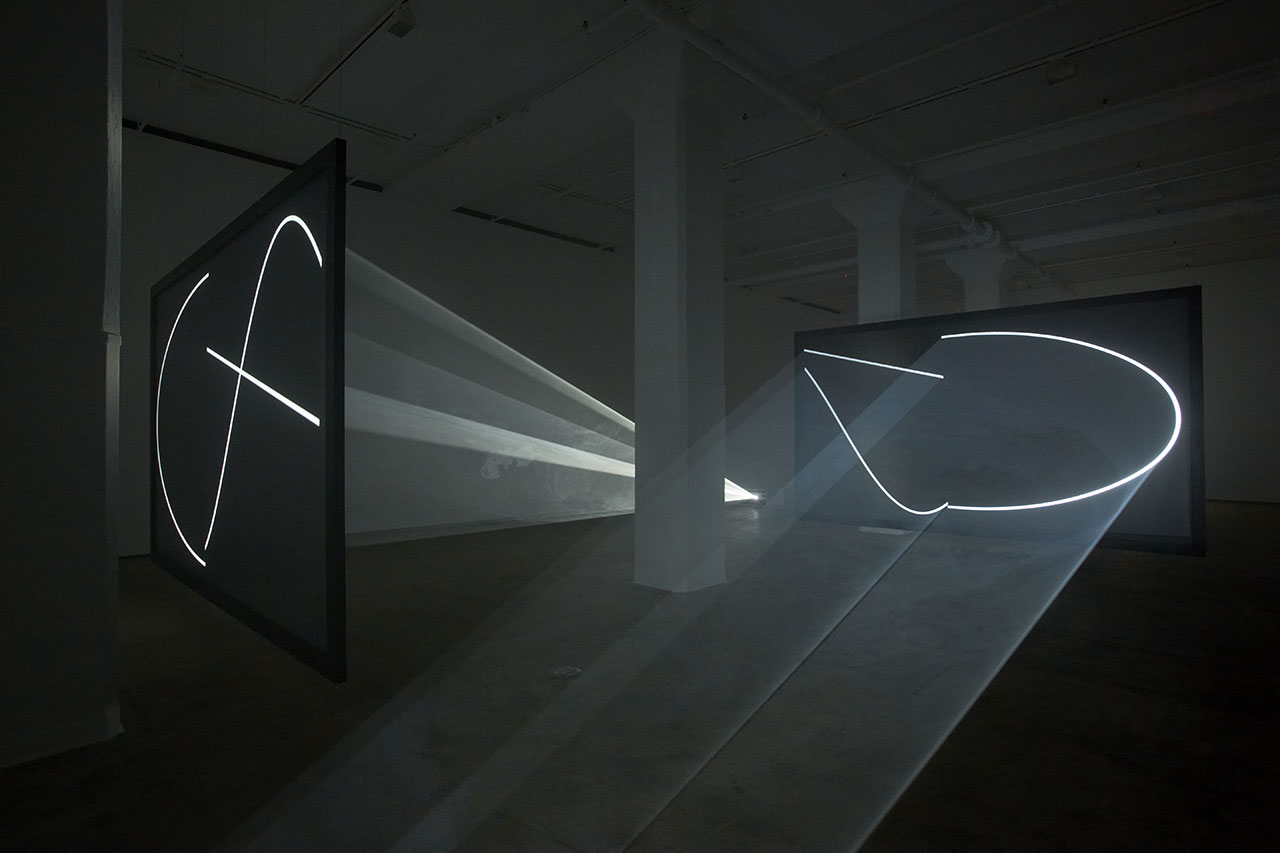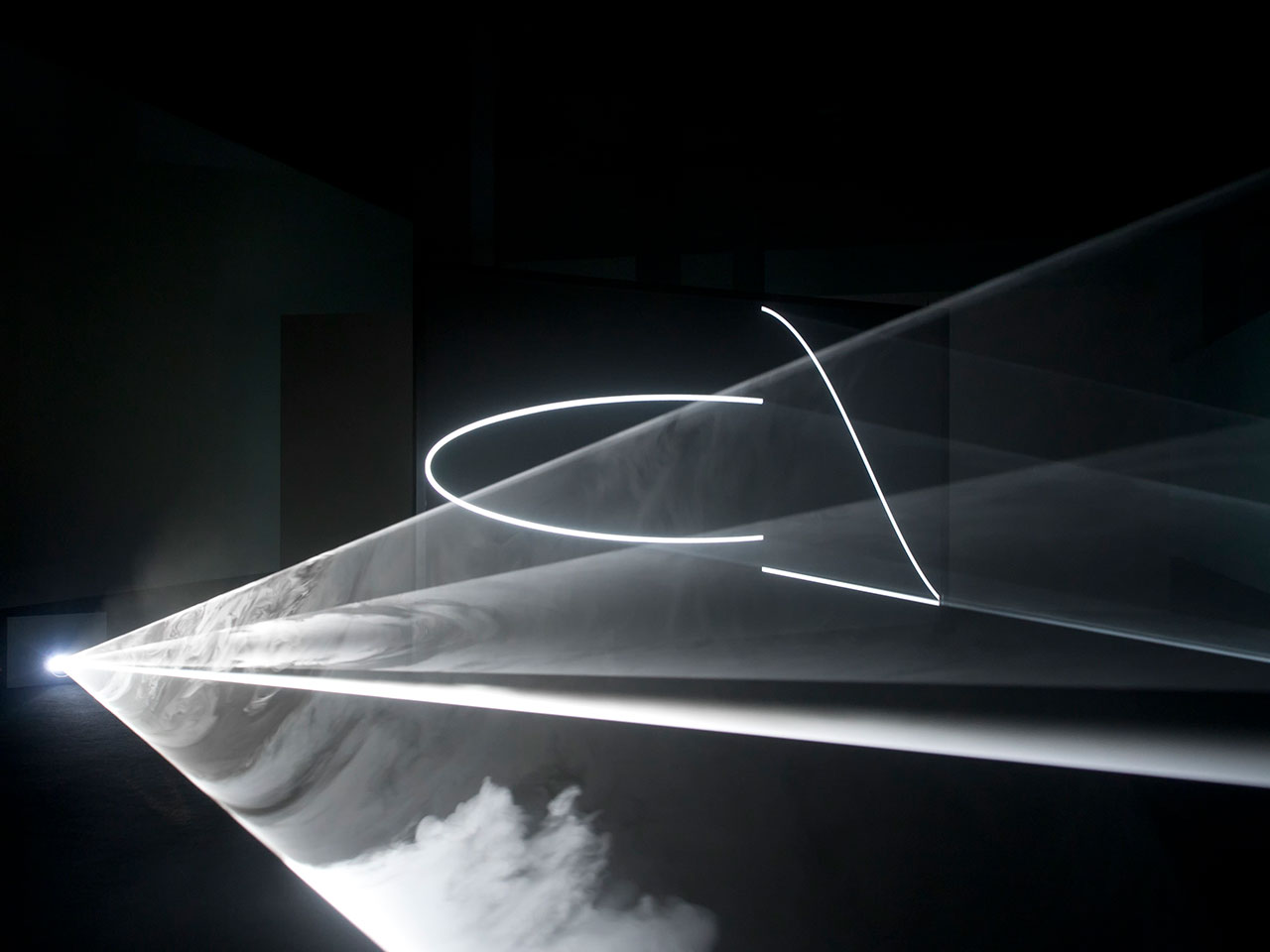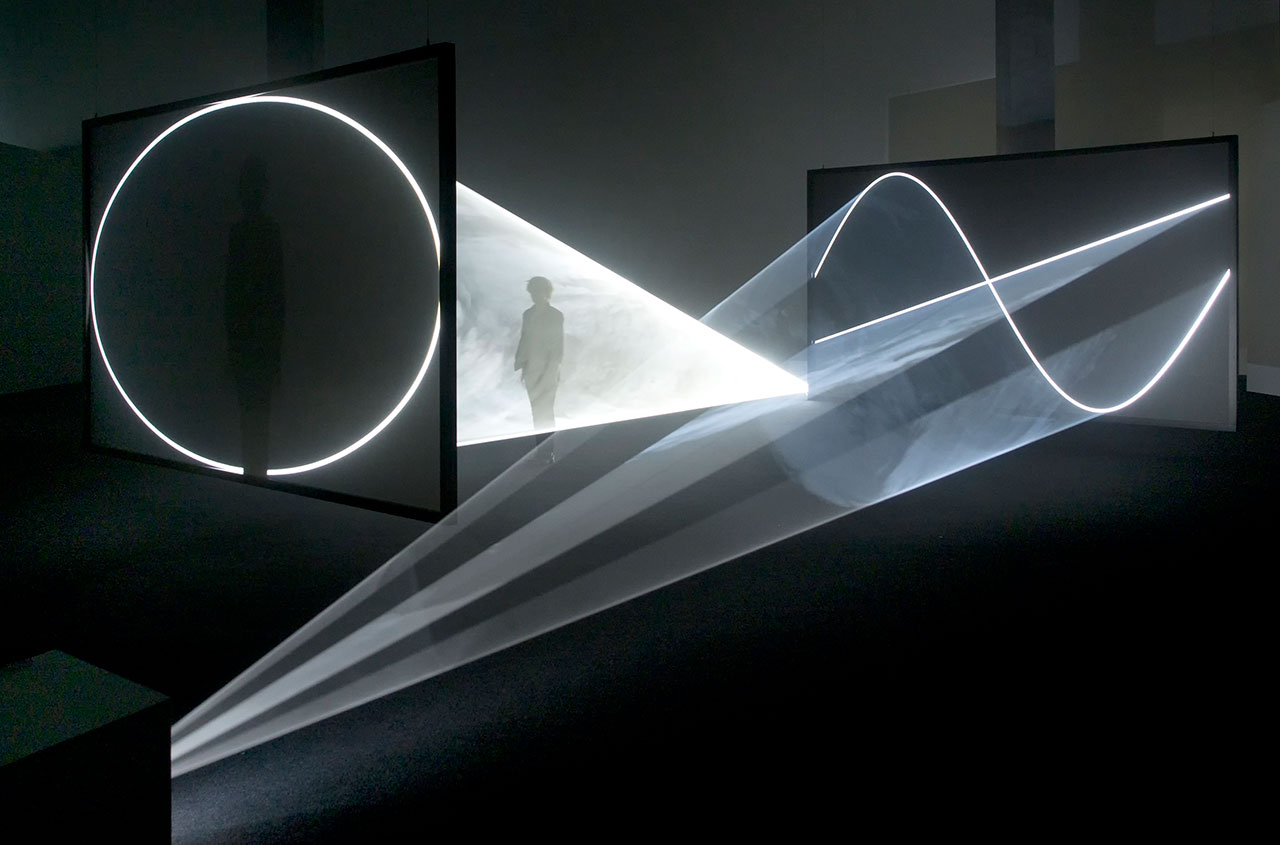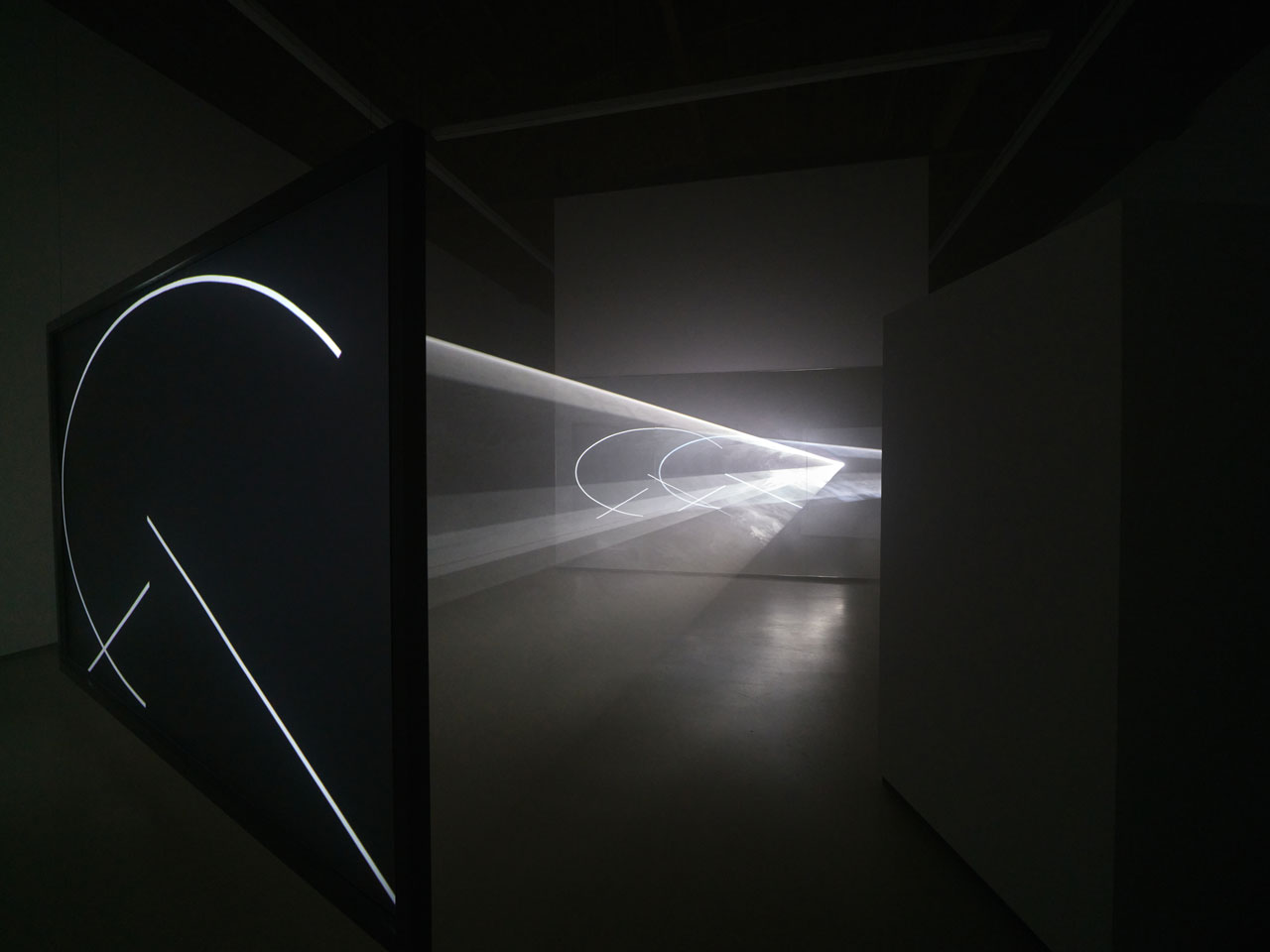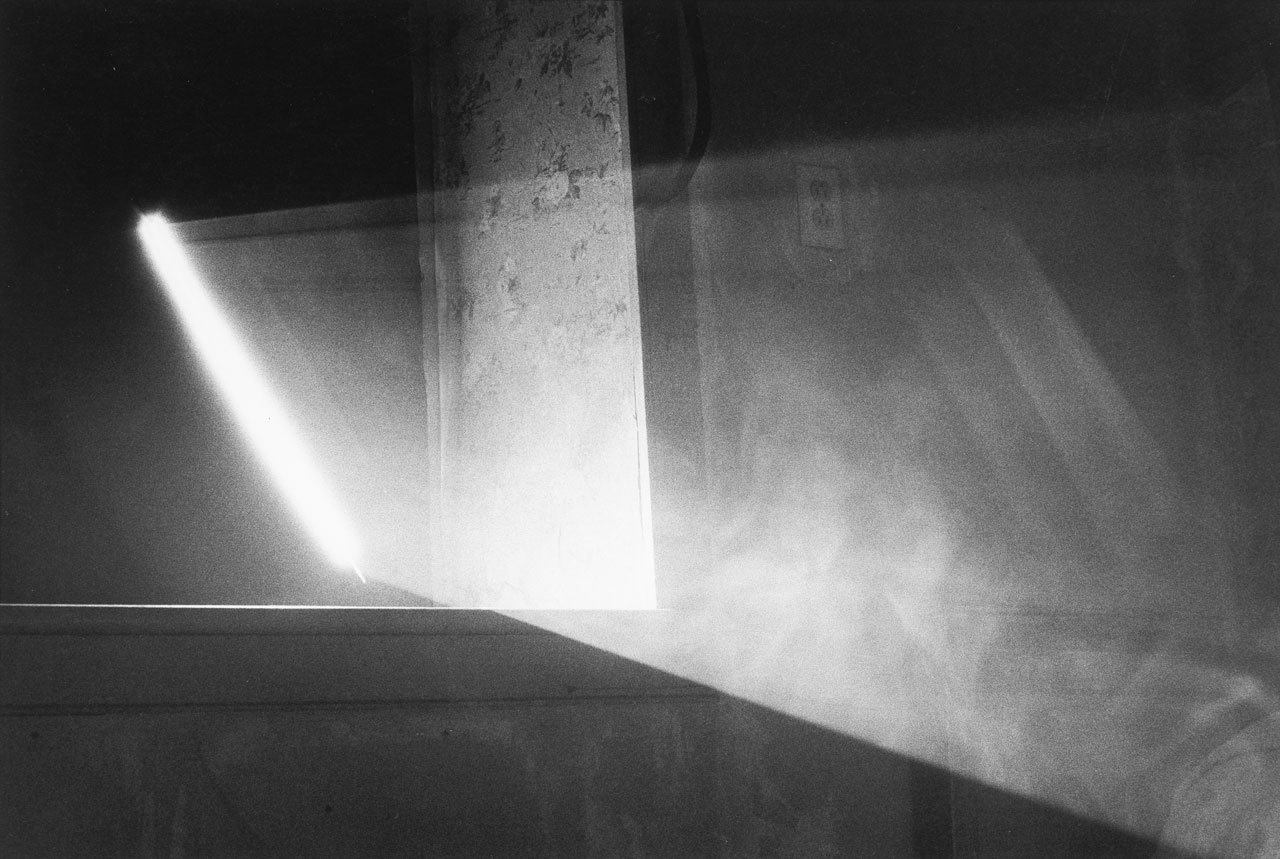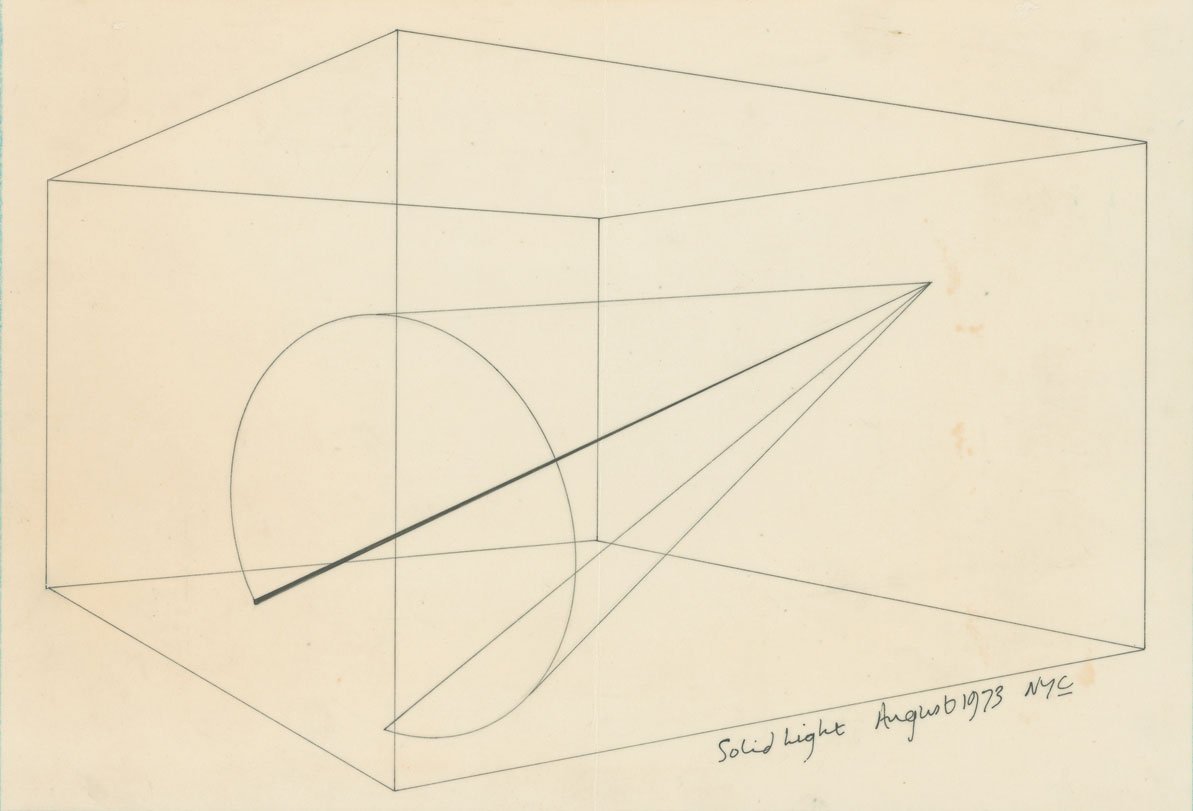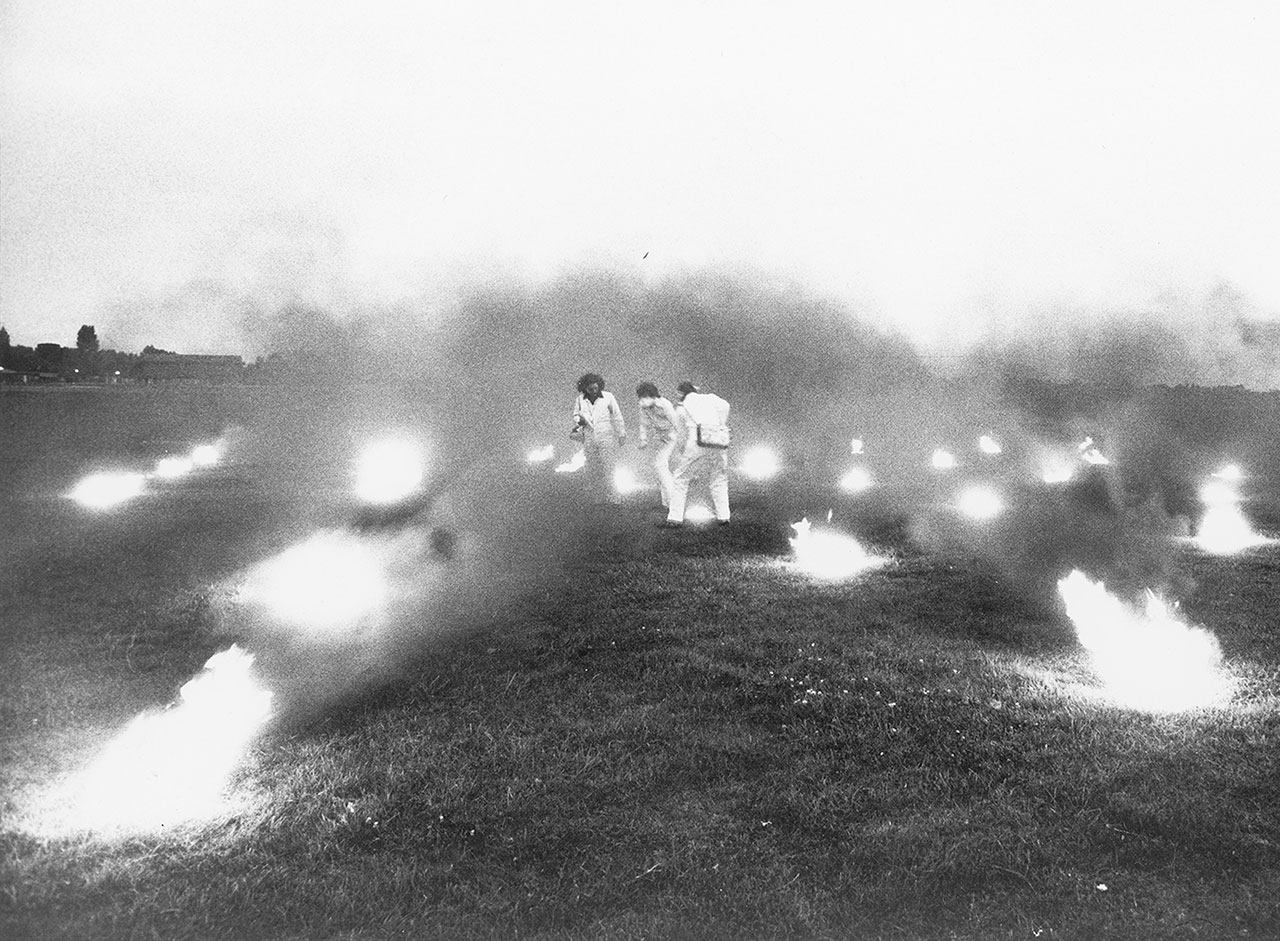PRESENTATION: Anthony McCall-Solid Light
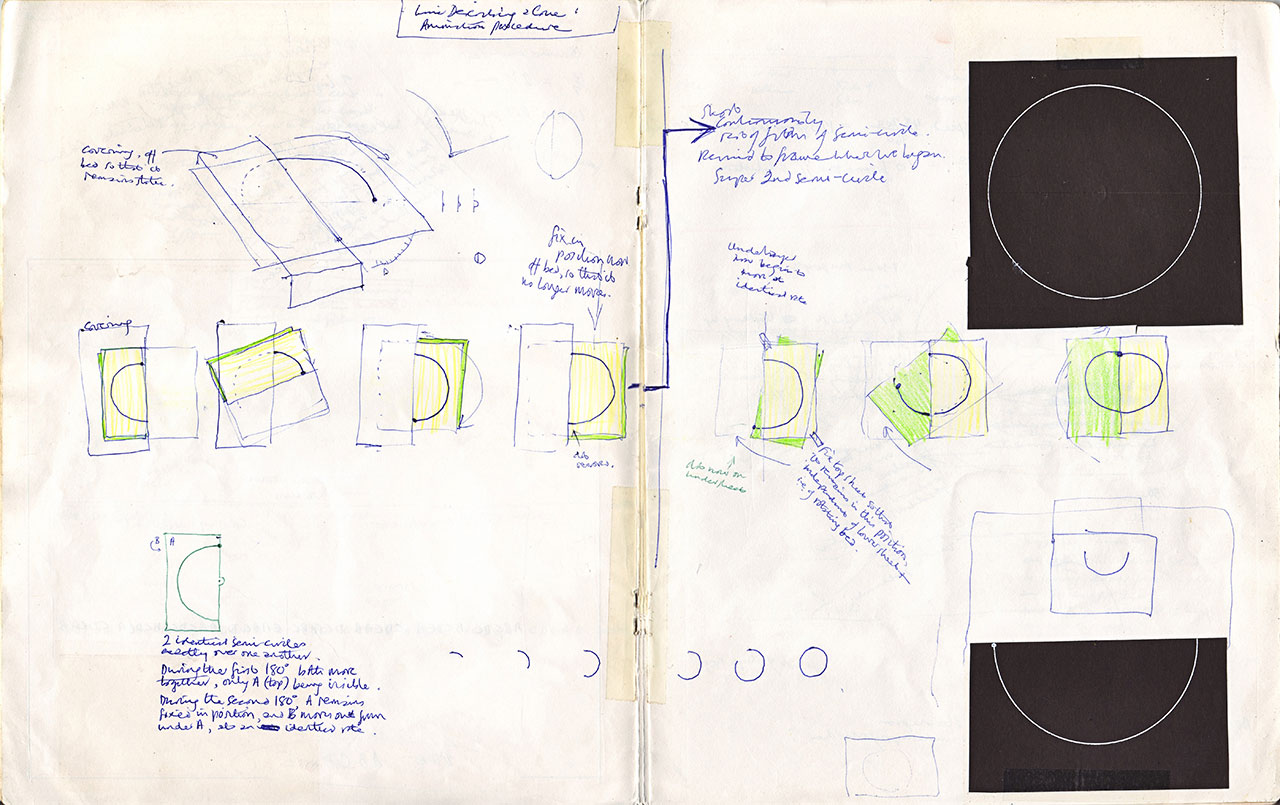 Anthony McCall has a cross-disciplinary practice in which film, sculpture, installation, drawing and performance overlap. McCall was a key figure in the Avant-Garde London Film-makers Co-operative in the ‘70s and his earliest films are documents of outdoor performances that were notable for their minimal use of the elements, most notably fire.
Anthony McCall has a cross-disciplinary practice in which film, sculpture, installation, drawing and performance overlap. McCall was a key figure in the Avant-Garde London Film-makers Co-operative in the ‘70s and his earliest films are documents of outdoor performances that were notable for their minimal use of the elements, most notably fire.
By Dimitris Lempesis
Photo: TATE Archive
Anthony McCall presents an exhibition of “Solid Light”. An early pioneer of experimental cinema and installation art, McCall is known for his material film installations where projected light is visibly enhanced using a thin mist to produce solid light forms, bringing together film, sculpture, and drawing. Visitors are invited to interact with each of the four solid light works, offering an unforgettable immersive encounter. The exhibition also includes film, photography and archive material documenting McCall’s extraordinary practice. McCall’s practice developed during his early career in the early 1970s when he was involved in London’s independent film community. Tate Modern’s exhibition features photographs and film footage of the artist’s earliest performances, including the significant “Landscape for Fire” (1972), which depicts a carefully choreographed sequence performed outdoors: uniformed participants from the art collective Exit light fires in a geometric grid formation against a soundtrack of foghorns, wind, and burning. Contrasting the unpredictability of nature with mathematical order, the work speaks to McCall’s developing conceptual interest in shape and movement. The exhibition also includes early works like “Room with Altered Window” (1973), demonstrating the artist’s increasing interest in light and architectural interventions. In 1973, McCall moved to New York and began exploring the boundaries between sculpture and film. Inspired by the shaft of light that radiated from film projectors, he developed an idea which would invert the rules of cinema: inviting the audience to turn around and face the source of the light rather than the screen. This led to the conception of the first of McCall’s solid light works: “Line Describing a Cone” (1973). The work, which was acquired by Tate in 2005, is the first solid light work visitors encounter in this exhibition. Created using a film projector and 16-millimetre film, the work begins with a thin pencil of light shone onto a wall. Across 30 minutes, the outline of a circle is slowly ‘drawn’ on the wall, casting a cone of light from the projector through the space. Although deceptively simple, this work considers the nature of film itself: focusing on the shape of light, not just the traces it casts. Included in the exhibition are sketches and photographs of McCall’s original plans for this work. Towards the end of the 1970s, McCall withdrew from making art and was not to return to his practice until the dawn of the new millennium, attracted by the artistic potential that emerging technology promised. Haze machines could improve visibility of the works by adding mist to the air giving solid light works a more tactile quality. Digital projectors meanwhile offered new possibilities; no-longer tied to the 4:3 aspect ratio of analogue projectors, McCall was able to realise more complicated forms, experimenting with ‘travelling waves’ to transform pockets of space inside the solid light works. Shown in the exhibition is the ambitious “Doubling Back” (2003), McCall’s first work to reimagine the solid light concept for the 21st century. “Face to Face” (2013) sees the possibilities developed further; its projected forms interlock, allowing the viewer to paradoxically look towards the projector and a screen to see the footprint of the form they are within. The exhibition culminates with one of the artist’s latest works, “Split-Second Mirror” (2018). Using a mirror to interrupt a plane of light, the work is perhaps McCall’s most visually complex to date, continuing to push the possibilities of reinterpreting sculptural space using cinematic devices.
Photo: Anthony McCall, spread from notebook 66 (1973.07.10-1973.08.21) showing the making of Line Describing a Cone. Courtesy of the artist, Sprüth Magers, and Sean Kelly New York
Info: Curators: Gregor Muir and Andrew de Brún, TATE Modern, Bankside, London, United Kingdom, Duration: 27/6/2024-27/4/2025, Days & Hours: Daily 10:00-18:00, www.tate.org.uk/
